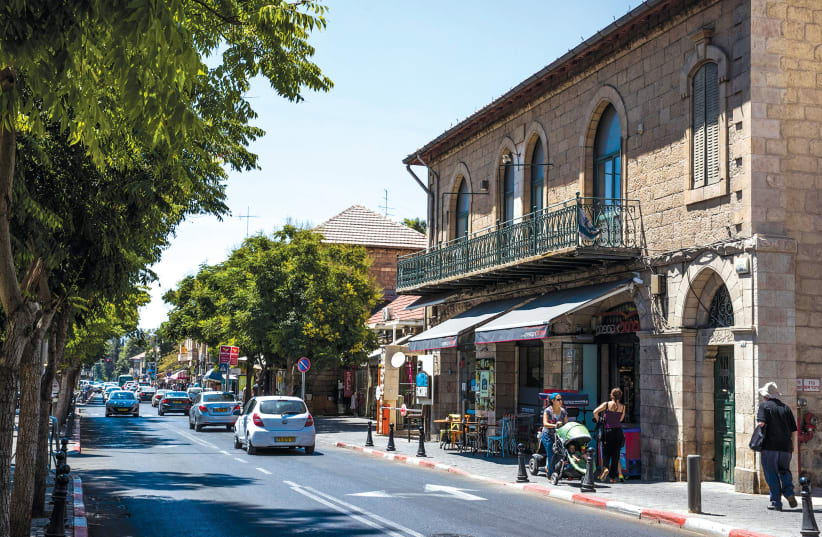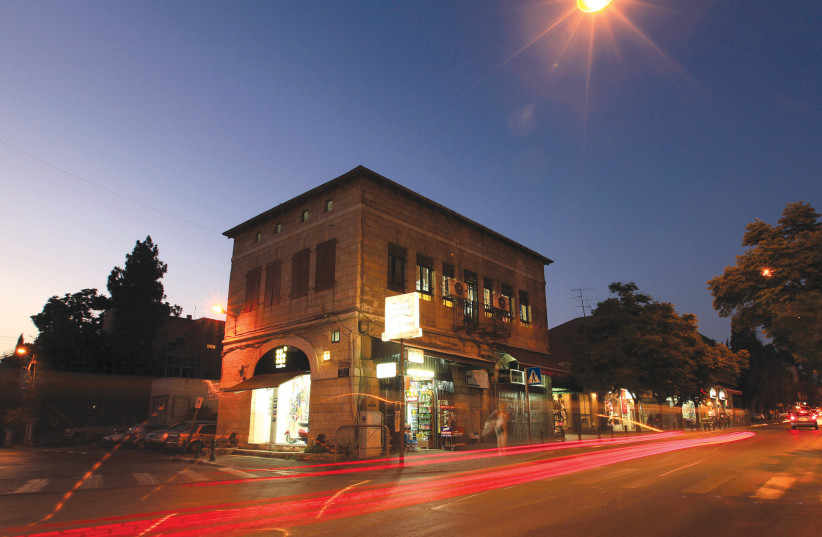From time to time, Jerusalemites hear about a special building, perhaps a particularly well-loved and well-known building, which suddenly comes out of the quiet place where it has been until now and enters the public discourse in a storm, due to a decision of the responsible bodies who approve changes, additions or, God forbid, demolition and rebuilding. Usually, these are buildings whose sentimental value may be greater than their historical or architectural value, but Jerusalemites are very attached to the buildings that long adorned the city.
Such a case happened a little over a week ago, as the local planning and construction committee approved an addition to the building known as Miller’s House, located at 6 Emek Refaim St. in the German Colony. Last week, the Jerusalem Municipality approved it for deposit in the District Committee as a significant plan at the entrance to the German Colony neighborhood for a new hotel and housing project.
It is important to note that this is a building classified for preservation by the municipality’s conservation department, which has great value in many respects: historical, architectural, the character of the neighborhood and more. The building and its front facade were built in 1873. A later rear facade was built for the building, in 1883.
Opponents of the project ask if Jerusalem municipality is once again planning and developing a vision of turning a historic building into another tourist project. Miller House, a two-story residence, was the first house built on Emek Refaim. It was built in 1873 by Mathews Frank, who purchased the land a year earlier from Arabs in the area and later on, built a small flour mill, which was operated by steam.
Although the plan offers full preservation of the main building, it includes the addition of a rear wing for the use of the hotels and for accommodation in the building. In addition, the plan includes the construction of a residential building nearby on an area of 1,970 acres. All together, it will include a two-story conservation building, 36 hotel rooms and 15 new housing units for a total construction area of 9,000 square meters.
Who supports, opposes the Jerusalem development project?
Mayor Moshe Lion is very supportive of the project and sees it as part of his vision of developing housing, hotel and commercial areas for the city at an accelerated pace. Lion sees the approval of the plan by the local committee (presided by Eliezer Rauchberger, his deputy and chair of the United Torah Judaism list on the city council) as a necessary part of his municipal policy for development that combines, in his view, the value of preservation, alongside the necessary development of the city and its strengthening.
However, Itzik Shweiki, the Jerusalem District director of the Council for the Conservation of Heritages Sites in Israel, who is opposed to the project, says that the plan hasn’t yet been approved by the District Committee and that it is still too early to say whether it will actually be approved, since the project is completely contrary to the Emek Refaim Plan and the Master Plan for the German Colony and the Greek Colony neighborhoods.
The presenter of the project is the Blue Marble company, which constructed the luxury residential project not far away at 18 Emek Refaim St., which is currently used as the residence of the US ambassador to Israel.
NOT ONLY the Council for the Conservation of Heritages Sites in Israel opposes the plan. The local council administration, Ginot Ha’ir, also opposes it, even though the original building will remain as it is. “This plan is not compatible with the plan of the German Colony, as it will destroy the unique courtyard,” the council board of residents claims. “The project will damage the unique texture of the neighborhood in favor of hotels and commerce, as if ignoring that there is already a plan for the construction of a Four Seasons hotel nearby,” added an official on the council.
“The project will damage the unique texture of the neighborhood in favor of hotels and commerce, as if ignoring that there is already a plan for the construction of a Four Seasons hotel nearby.”
Ganot Hair council official
At the National Council for Preservation, there is an understanding of the constant tension between the need to preserve and the desire to develop. In a study done by the Jerusalem Institute for Policy Studies about a decade ago, they were very aware of this tension between the needs of the hour, city development and the desire to preserve, not destroy the past.
Among their findings, there is an understanding that, with the exception of historical sites of universal touristic value, ancient buildings do not generate a significant financial return. Hence, they are often at risk of demolition due to their relatively low status in the planning priority order, which includes real estate initiatives with high economic potential. In the eyes of those who want to preserve and protect the character of places of historical value, there is constant tension between renewal and nostalgia.
Hence, urban planners, especially in a city like Jerusalem, are required to maintain a delicate balance that allows for an architectural symbiosis between ancient buildings of historical value and innovative high-rise architecture projects. In other words, the rope on which one steps between the demand to develop and the desire to preserve is a very tight one.
How to save historic buildings?
The Burra Charter is a national charter that establishes principles for the management and conservation of cultural sites and a series of criteria for the definition of heritage sites, in accordance with the decisions of the International Council for Monuments and Sites (Burra Charter, ICOMOS Australia, 2013).
The document reveals that the cultural value of a particular site may arise from various characteristics: aesthetic, historical, geological and even chemical. It seems that the overriding consideration that guides the final decision to define a given site as a heritage site is its cultural significance. In the end, if a large number of people regard a certain structure as having historical, cultural or spiritual significance, then, after all, this will be exactly what a heritage site is according to this convention. (Source: Jerusalem Institute for Policy Research.)
Israel (Lolik) Kimchi is a senior researcher at the Jerusalem Institute for Policy Studies and an urban planner who was a member of the Jerusalem Master Plan team in 1964. In fact, Kimchi is entrusted with providing professional opinions concerning the field of conservation in Jerusalem. With his help, the Jerusalem Municipality defined a list of sites and buildings that includes more than 1,200 sites for preservation. Not surprisingly, Miller’s House is included on that list.
In order to compile the list of buildings, Kimchi relied on the set of criteria for the preservation of buildings as is customary in English law (Listed Buildings Statutory Criteria). According to him, the sentimental value of a structure may be part of a set of considerations but is not a sufficient condition for defining a structure as suitable for preservation. The building doesn’t have to be a hit, but it must be valuable in terms of landscape, history, architecture or the type of stone from which it was built.
In regard to Miller’s House, what is expected at the moment is the familiar route of construction planning processes in the city. The deposit in the district committee is in the current stage. Later, the committee will invite residents and organizations to submit objections. After that, there will be discussions. Such a process can take a long time, so it is difficult to know in advance what the final result will be.
The residents of the German Colony and the Greek Colony have already demonstrated, several times in the past, their formidable ability to oppose projects that damaged their understanding of the character of their neighborhoods, so here too, a difficult confrontation is expected. In any case, it is a long process, and there is doubt as to how much the entrepreneurs will be interested in absorbing it in their profit calculations. ❖


